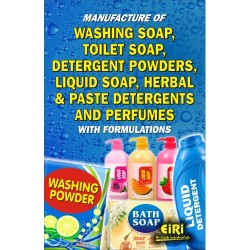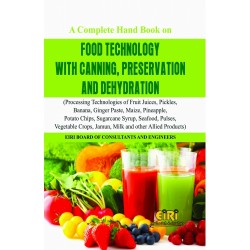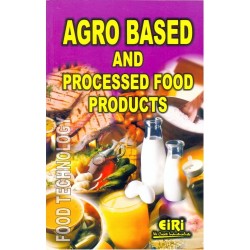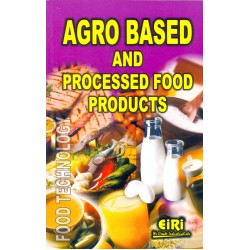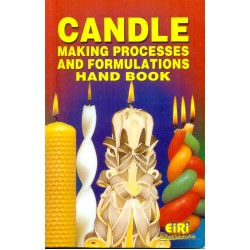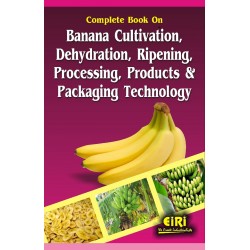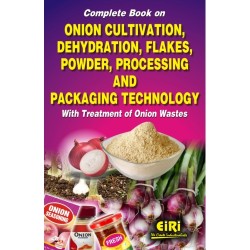Paint Technology Hand Book with Formulations (Acrylic Emulsion, Powder Coating, Levelling Agents, PU Ink Binders, Dispersing Agents, Formaldehyde, Polyester Resin, Acrylic Binders and PU Coatings)
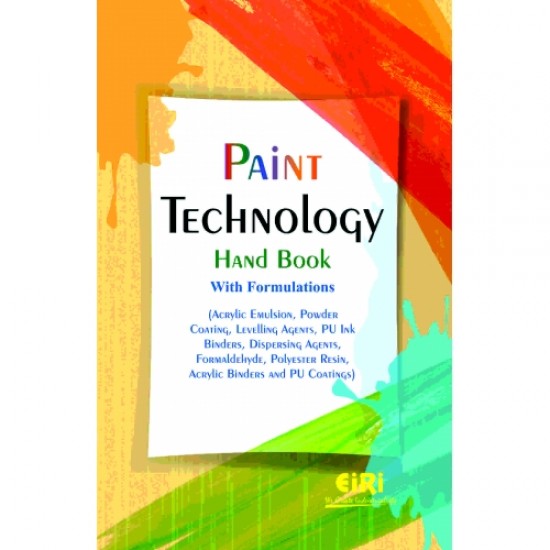
- More than 45 years of experience
- Managed by expert industrial consultants
- ISO 9001-2015 Certified
- Registered under MSME, UAM No: DL01E0012000
- 24/5 Research Support
Get your quesries resolved from an industry expert. Ask your queries before report or book purchase. - Custom Research Service
Speak to the our consultant to design an exclusive study to serve your research needs. - Quality Assurance
All reports are prepared by highly qualified consultants & verified by a panel of experts. - Information Security
Your personal & confidential information is safe & secure.
- Introduction
- Acrylic resin
- Thermoplastic Solution (TPA)
- Thermosetting Solution (TSA)
- Thermoplastic dispersion i.e. Acrylic Latex
- Acrylic Emulsions
- Various methods of synthesis of thermosetting acrylic coatings (resin system/coating)
- Aqueous systems
- Commonly used acrylic monomers
- Various film properties obtained by using appropriate monomers
- Non aqueous systems
- Hybrid systems
- Some of the important ASTM standards pertaining to paint industry
- Thermal and photo degradation of acrylic resins
- Introduction
- Effect pigments
- The metallic effect
- Particle size
- Particle shape pigment morphology
- Particle size distribution
- Pigment orientation
- Flop effect
- Leading and non leafing metallic pigments
- Incorporation of metallic pigments
- Extrusion/grinding
- Dry blending
- Bonding
- Bonding process
- The process
- Process stage
- Master Batch Mixer
- Safety
- Cooler mixer
- Determination of bonding quality
- Powder vs. liquid
- Introduction
- Surface tension
- The coheslve forces between the molecules at the surface are not evenly distributed on all sides as
- compared to the molecules in the inner
- layer, surface tension is the result of the
- unbalance forces.
- Total surface fension with relation to dispersive surface tension and polar surface tension
- Inter molecules forces
- London Dispersive Forces
- Example of a Helium atom illustration of London Dispersive Forces
- Influence of shape on molecules London dispensive Forces
- Dipole forces/moment
- The creation of Dipole dipole charges
- Influence of molecule geometry on dipole molecule
- Hydrogen bonding
- Creation of Diupole dipole interaction among molecules that have dipole moment
- Examples of the electric dipole moment
- Examples for Hydrogen bonding formation in water
- Tonic bonding (Not covalent bonding)
- Examples of salts with ionic bonding after neutralization
- Comparing all forces
- Comparison chart on different forces
- Surface tension of some common materials used in coatings
- Surface tension of common materials involve in coating at 20oC
- Interfactial surface tension
- Determination of surface tension
- Determination of Liquid surface tension
- gD and gP value
- Method of static surface tension
- Lecomte du Nouy
- Method of static surface tension
- Lecomte du Nouy
- Demonstration of the Withelmy Plate method
- Demonstration of Lecomate Du Nouy method
- Fowkes Equation on calculating the interfacial surface tension of solid liquid.
- Withelmy Plate
- Pendant Drop method
- Method of dynamic surface tension
- Bubble Pressure Method
- Instrument use to perform the pendent drop method
- Determination of solid surface tension
- Surface tension influent on coating
- Leveling and orange peel
- Surface tension on leveling
- Leveling equation (Newtonian liqid)
- Relation of surface tension, film thickness and viscosity on levelling time
- Flat and wavy surface
- Relation of surface tension of the paint and film thickness and time allowed to achieve good leveling
- Surface tension gradient influence on leveling
- Surface tension gradient influence in leveling
- Crater and fish eyes
- Substrate wetting
- Edge crawling framing effect
- Telegraphing and ghosting
- Solvent evaporation
- Wet paint
- Framing defect created
- Bernard Cells
- Air draft sensitivity
- Over spray
- Polymers that act as low surface tension surfactant in coating slip and leveling agent
- Polysiloxane
- Pure polydimethylsiloxane
- Branch/comb modified polysiloxane
- Branch or comb type of Polysilcxane
- Alkyld with CS-C18
- End modification Polysilcxane
- Properties of the silicone according to the parameter
- Properties of the silicone according to the parameter
- The slip performance of silicone
- Types of slip
- Determination of slip
- Self made slip angle measurement
- Scientific Instrument for slip determination
- Dilemma of silicone
- Overcoat adhesion problem
- Contamination
- Inner Bubble for PU
- Foam stabilizing effect
- Low surface tension and good compatibility with system
- Foam stabilizer
- Additional information on Polysiloxane
- Improve intercoat adhesion by using Polysiloxane
- Non Silicone leveling agent modified acrylic polymer
- Types of Acrylic based flow agent
- Straight acrylic with alky, polyester or polyether modification
- Comparing performance of a Polysiloxane and polyacrylate
- Comparison of the properties of a fluorocarbon and polyacrylate
- Comparison of the properties of Polysiloxane and fluorocarbon modified Polyacrylate
- Properties of Polysiloxane, Polyacrylate and Fluorocarbon modified Polyacrylate
- Polyacrylate with Fluorocartion modification
- Comparison of the avidity of Polysiloxane, Polyacrylate and Fluorocarbon modified
- History
- Background
- Raw materials
- Nancy EV Bryk
- The Manufacturing Process
- Making the ink
- Stamping and forming
- Molding the housing
- Ink filling and assembly
- Final assembly, packaging and shipping
- Quality Control
- Thick versus thin bed laying technique
- Advantages of dispersible polymer powders as polymeric binder
- Interface between a polymer modified ceramic tile adhesive on a vitrified tile
- the polymer films at the interface between the porcelain tile surface
- and the cementitious mortar can be seen clearfy
- Summary
- Advantages of polymermodified tile adhesives
- Vinnapas dispersible polymer powders
- Reactivity
- Product application
- Cosmetic use
- Pharmaceutical use
- Chemical and industrial specialities
- Safety
- Process Outline
- Indian producer
- Brand name
- Important Global Manufacturers
- New products launched by Noveon
- Introduction
- experimental
- Materials
- Specification of CNSL (IS-840)
- Specifications of the Ketonic (Cyclohexanone formaldehyde)resin
- Synthesis
- CNSL Phenol formaldehyde resin formulation for laboratory preparation
- FTIR Analysis and Interpretation
- Morphological study of blends
- Driers
- Tests carried out for the study of coating properties
- Results and Discussion
- Drying Time SEM of 50-50 (% wt.) concentration of Blend
- SEM of 30.70 (% wt) concentration of Blend
- SEM of 70:30 (% wt) concentration of Blend
- Ketonic (Cyclohexanone formaldehyde) resin
- Coating properties of CNSL Phenol formaldehyde Ketonic resin blends
- Chemical resistance
- Introduction
- Theory of adhesion on plastics
- Mechanical theory
- Chemical bonding theory
- Diffusion Theory
- Main characteristics of the plastic substrates affecting adhesion
- Substrate weting
- Substrate swelling
- Surface topography
- Pretreatment
- Plasma discharge
- Flaming
- Chemical
- Solvent clearing
- Adhesion promoters
- Introduction
- Comminution processes: True Comminution and Dispersing
- Economic Dispersionizer OMEGA Operating principle
- Design of the OMEGA Economic Dispersionizer
- Design of NETZSCH Dispersion Device
- Model Sizes
- Advantages
- Areas of Application
- Application example Titanium dioxide
- Titanium dioxide suspension after one pass in the OMEGA
- Polyisocyanate:how to make it hydrophilic
- Solubility parameters of hexamethylene trimer or bluret
- Experimental
- Hardness
- Characteristics of the hardeners
- Starting point formulations
- Results
- Emulsification ability
- Emulsification into water
- Formulations
- Emulsification into the resin part
- Visual aspect of formulations regarding the mixing time and the nature of the polyisocyanate
- Application properties
- Influence of the nature of the polyisocyanate on the VOC content
- VOC, gloss and Koenig hardness of coatings made with Easaqua XI.600 and polyisocyanate
- Water resistance
- Contact angle of a drop of water with the surface
- Contact angle measurement of water on 2K water borne coatings (initial and after 3 days at 100% RH and 50oC
- Evaluation of adhesion with cross hatch and tape adhesion test
- Corrosion resistance
- Visual aspect of the coatings after cross hatch and tage adhesion test
- Visual aspect of coated panels after 350 hours of salt spray test
- Introduction
- Chemistry
- PU ink binder characteristics
- Introduction
- Dispersion Process
- Replacement of air and water by the resin
- Selection criteria for dispersing agents
- Paint industry
- Low molecular weight Dispersing agents
- High molecular weight dispersing agents
- Common issues solved by dispersants
- Textiles
- Desizing to improve their strength and blending behavior during the weaving process
- Mercerizing for improvement of dyeability, strength, and appearance of cotton fiber
- Foods
- Pharmaceuticals
- Other industrial aplications
- Introduction
- Release coating markets
- Cure chemistries and delivery systems
- Development, progress and trends
- Catalyst systems
- The Development History of Silicone Release coatings
- Inhibitors
- Comparison of Cure systems
- High release additives
- Factors affecting release performance
- Humidity and substrate stiffness
- Temperature
- Testing
- Raw materials
- Finished product testing
- System selection
- Solvent Based vs. Solventless vs. Emulsion Delivery Systems
- Comparison of Delivery Systems
- Advantages
- Solvent based
- Emulsion
- Solvents
- Disadvantages
- Solvent based
- Emulsion
- Inroduction
- Experimental procedure
- Sample preparation
- Experiments
- Processing of Polarization data for the estimation of Ecorr and icorr
- Corrosion data of the Coated specimens
- Results and Discussions
- Thermochromic inks
- Application
- Color Information
- Color changing Temperature Range
- Security Inks
- Bleeding Inks
- coin reactive inks
- Erassable ink
- Pen reactive ink
- Heat Reactive Irreversible
- Visible Infrared inks
- Optically Variable Inks
- Penetrating Ink
- Photochromic Ink
- Solvent/Chemical Reactive Inks
- Water fugitive ink
- UV Invisible Fluorscent Inks
- Introduction
- Self healing concept
- Different methods of self healing
- Ring opening metathesis polymerization
- Polydimethylsiloxane based self healing
- By incorporation of AL203 No.183
- Using colloidal silica
- Incorporation of microcapsule in the coatings
- Brief idea of the base used for experiments
- Smart self healing nanotechnology coatings
- New approach towards developments in self healing coatings
- Self healing elastomer nanocomposites
- Research line
- Benefits of self healing coatings
- Applications of self healing coatings
- Automotive coatings
- Marine Coatings
- Coatings for defence
- Coatings for glass
- An example of a GC-FID profile of the acidic fraction and rosin on a TC-1 column
- An example of GC-FID profile of the acdic fraction and rosin on a TC-5 column
- Composition of Acidic fractions eluted on TC-1 and TC-5 columns
- Composition of Rosins eluted on TC-1 and TC-5 columns
- An example of a GC-FID profile of the acidic fraction and rosin on a TC-5 column (Isothernal temperature programme
- Experimental
- Materials
- Technique
- Synthesis of unsaturated polyester of rosin
- Measurements
- Curing exotherms
- Testing of the coatings
- Results and discussion
- Synthesis of UPE resins
- Molecular weight of the produced UPE and their hydroxyl
- Curing exotherms
- Curing exotherms of UPE with vinyl ester resins
- Curing parameters of APAUP1 with AEMPAE and MEMPAE at different temperatures
- Furing parametes of APAUP-2APAUP6 with AEMPAE at different temperatures
- Curing DSC measurements
- DSC thermal characteristics of cured UPE resins with styrene
- Evaluation of cured resins for coating applications
- Coating tests of UP resins cured with styrene and AEMPAE and MEMPAE curing agents
- Chemical resistances of cured UPE/VE systems
- Chemical resistance tests of UPE cured with AEMPAE and MEMPAE at different mixing ratios
- Process of marine bio fouling
- Parameters effect on bio fouling growth
- Geographical location
- Operating pattern of the vessel/Speed
- Temperature of water
- Salinity/pH/Alkalinity
- Pollution and oil greases contamination in coastal water
- Review of conventional antifouling paint
- Soluble Matrix Type first generation antifouling
- Leaching action of soluble matrix type A/F
- Diffusion or, insoluble matrix type or, contact leaching second generation antifouling
- Controlled depletion type (CDP) third generation antifouling
- TBT based Self polishing copolymer (SPC) Fourth generation antifoulings
- New generation tin free antifouling
- TBT free self polishing copolymer (SPC)
- Self Polishing Copolymer System
- Controlled release mechanism of TBT copolymer by hydrolysis
- Copper Acrylate SPC
- Zinc Acrylate SPC
- Silyl Acrylate SPC
- Ion exchange SPC
- sPC Mechanism
- Biocidal free foul release
- Molecular structure of a cross linked poly (dimethylsiloxane)
- Solvent borne alkyds
- Odor and VOC
- Slow Drying
- Reduced Formulation Flexibility
- Poor UV Resistance
- Higher Operational Costs
- Gloss paints
- Good Contrast gloss
- Good Contrast gloss levels
- Flexibility and Blocking Resistance
- Excellent adhesion
- Coalescent Demand
- Fundamental Studies
- The picture showing the morphology of the coreshell (half moon type structure of the Acronal PA 510
- The half moon structure of Acronal PA 510 gives very Good blocking resistance to the paint film without losing flexiblity
- The chart shows the gloss levels of Acronal PA 510 versus the solvent based alkyd system
- The picture shows the adhesion of a gloss paint on an aged alkyd with
- Acronal PA 510 and competitor acrylic binders with standard adhesion promotion techniques,
- Acronal PA 510 shows the best adhesion on such surfaces
- The picture shows excellent durability of Acronal PA 510 when exposed for 3 years on a wooden panel
- Vinyl acetate ethylene copolymer structure
- The fundamentals of VAE technologyStabilization system of polymer chains achieved through surfactants
- Impact of co-monomers on Tg of VA Copolymers
- Improved performance
- Low odor paints and coatings
- Benefits in applications and industry
- Structural comparison of vinyl acetate ethylene (VAE) and vinyl acrylic butyl acrylate (VABA) copolymers
- Formulation for 100 kg
- Stage dispersion
- Stage Grind till H.G. 4 +
- Stage Discharge
- Stage MTO or Resin or toluene 4000
- Introduction
- Materials and Methods
- Materials Used
- Preparation of Varnish
- Preparation of Ink
- Varnish Formulation
- Ink Formulation
- Tests and Measurements (7-8)
- Results and Discussion
- Properties of Vegetable oils
- Properties of Varnishes
- Properties of Inks
- Duct freshness of the Inks
- Print and Post Print Properties of the Printing Inks (Prufbau/Gloss Art Paper/30 degrees C)
- Properties of NIPU at a glance
- Synthesis
- From glycerin carbonate Intermediates
- Synthesis of carbonates functional acrylate
- via glycerin chloroformate
- Via Vinyl Ethylene Carbonate
- Effect of solvent on the incorporation of CO2
- Incorporation % of CO2 into PGMA, catalyzed by different Lewis acid catalysts
- Synthesis of amine oligomers
- Targeted Parameters
- Reactivity of Cyclocarbonate groups with Amines
- Effect of solvent on the kinetics
- Aplication comparative advantages over conventional polyurethane
- Coatings
- UV stable coatings
- Adhesive and sealants
- Corrosive passive adhesives were prepared by a new method of their synthesis the method of multiplication
- IPN and nanocomposites
- Polyurethane foam
- Thermo stability and some properties of polymers
- Introduction
- Water thinable vegetable oils
- Material and methods
- Materials
- Malenization of Unsaturated Oil
- Neutralization of Malenized Oil
- Curing Reaction
- Preparation of HEFA
- Malenization of KBO
- Neuralization of malenized oil with triethyl amine
- Stoved film properties of the stoving compositions
- Composition and chemical characteristics of malenized RBO
- Preparation of stoving agents
- Characterization of coatings
- Result and discussion
- Physical properties of malenized RBO-HEFA based stoving composition
- Mechanical properties
- Chemical resistance
- Solvent and water resistance
- IR Spectrum
- Introduction
- Comparison of conventional & waterbone polyurethane coatings
- Applications
- Basic mechanism
- Hydrophilic polyisocyanates
- Water bome 2K PU approach
- Steps to be used to arrive at a perfect coating result
- Bayhydur crosslinking agent
- Polyol dispersions
- properties of Bayhydur XP 2547
- List of polyacrylate dispersions possibly for construction
- Typical formulations and discussion
- NCO/OH ratio
- NCO reacting with water
- Pot life
- Typical formulations
- Tough but flexible
- Stain resistance/dirt pick up resistance
- Fungus/Algae resistance
- Core shell technology of polyol dispersions
- Real life cases
- Floor of Bubble Bar
- Floor of Bayer
- Replacement of Blackboard with 2K WB PU in a School in India
- Properties for the formulations according to above formulations
- Exterior walls of Bayer Jinling Polyurethane Plant
- Comparison of remaining Fungicide/Algaecide in Film after water leaching
- Interior walls of Bathroom
- Others
How to Make Project Report?
Detailed Project Report (DPR) includes Present Market Position and Expected Future Demand, Technology, Manufacturing Process, Investment Opportunity, Plant Economics and Project Financials. comprehensive analysis from industry covering detailed reporting and evaluates the position of the industry by providing insights to the SWOT analysis of the industry.
Each report include Plant Capacity, requirement of Land & Building, Plant & Machinery, Flow Sheet Diagram, Raw Materials detail with suppliers list, Total Capital Investment along with detailed calculation on Rate of Return, Break-Even Analysis and Profitability Analysis. The report also provides a birds eye view of the global industry with details on projected market size and then progresses to evaluate the industry in detail.
We can prepare detailed project report on any industry as per your requirement.
We can also modify the project capacity and project cost as per your requirement. If you are planning to start a business, contact us today.
Detailed Project Report (DPR) gives you access to decisive data such as:
- Market growth drivers
- Factors limiting market growth
- Current market trends
- Market structure
- Key highlights
Overview of key market forces propelling and restraining market growth:
- Up-to-date analyses of market trends and technological improvements
- Pin-point analyses of market competition dynamics to offer you a competitive edge major competitors
- An array of graphics, BEP analysis of major industry segments
- Detailed analyses of industry trends
- A well-defined technological growth with an impact-analysis
- A clear understanding of the competitive landscape and key product segments
Need Customized Project Report?
- Ask for FREE project related details with our consultant/industry expert.
- Share your specific research requirements for customized project report.
- Request for due diligence and consumer centric studies.
- Still haven't found what you're looking for? Speak to our Custom Research Team
About Engineers India Research Institute:
Note: We can also prepare project report on any subject based on your requirement and country. If you need, we can modify the project capacity and project cost based on your requirement.
Our Clients

Our Approach
- Our research reports comprehensively cover Indian markets (can be modified as per your country), present investigation, standpoint and gauge for a time of five years*.
- The market conjectures are produced on the premise of optional research and are cross-accepted through associations with the business players
- We use dependable wellsprings of data and databases. What's more, data from such sources is handled by us and incorporated into the report
Why buy EIRI reports?
- Our project reports include detailed analysis that help to get industry Present Market Position and Expected Future Demand.
- Offer real analysis driving variables for the business and most recent business sector patterns in the business
- This report comprehends the present status of the business by clarifying a complete SWOT examination and investigation of the interest supply circumstance
- Report gives investigation and top to bottom money related correlation of real players/competitors
- The report gives gauges of key parameters which foresees the business execution






















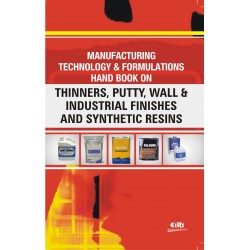
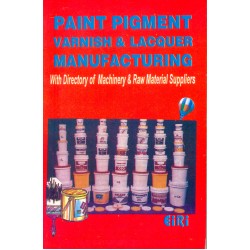

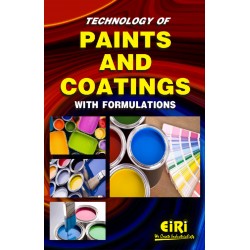

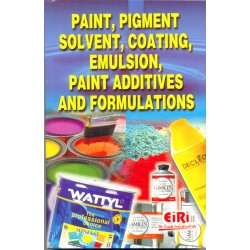
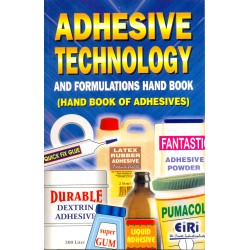

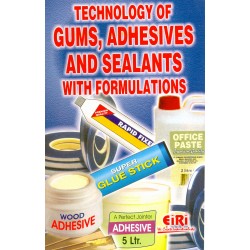
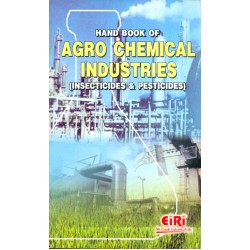

-250x250h.jpg)
